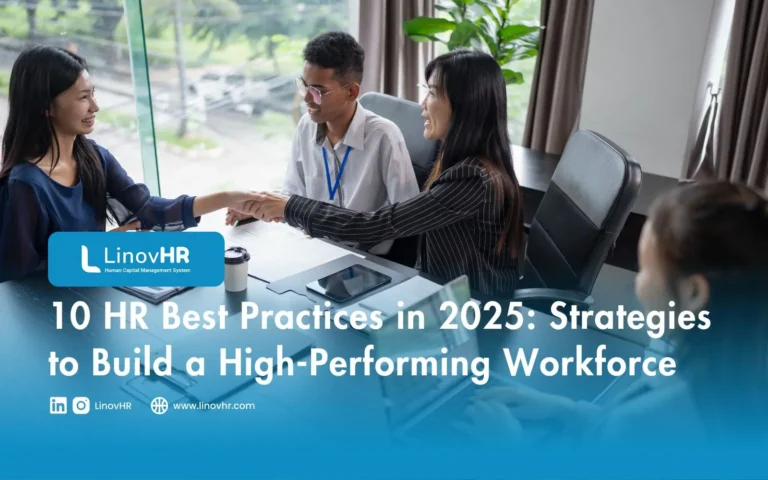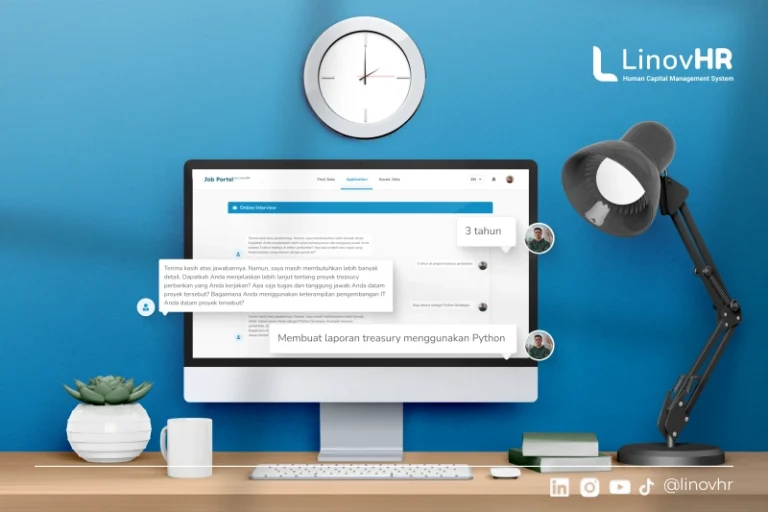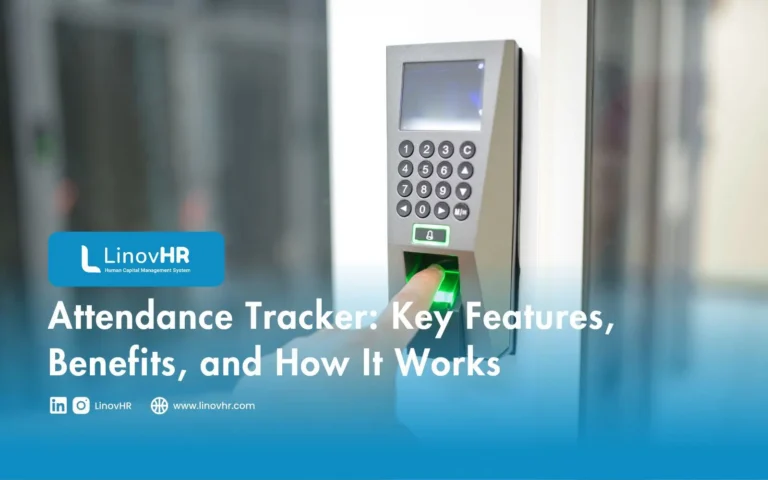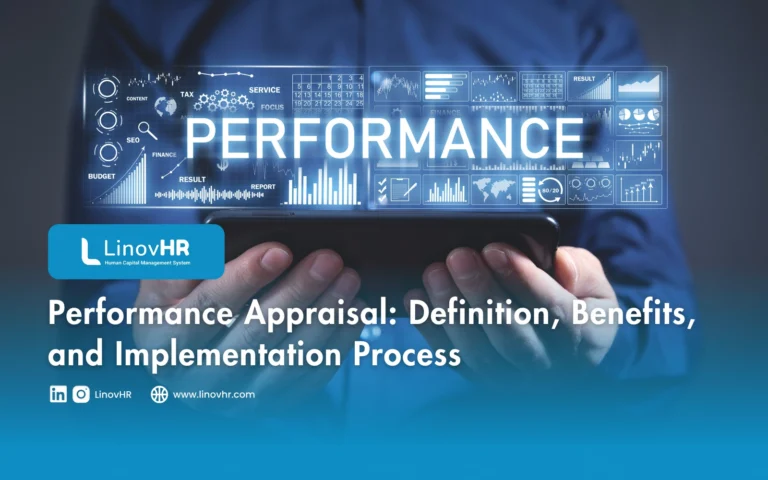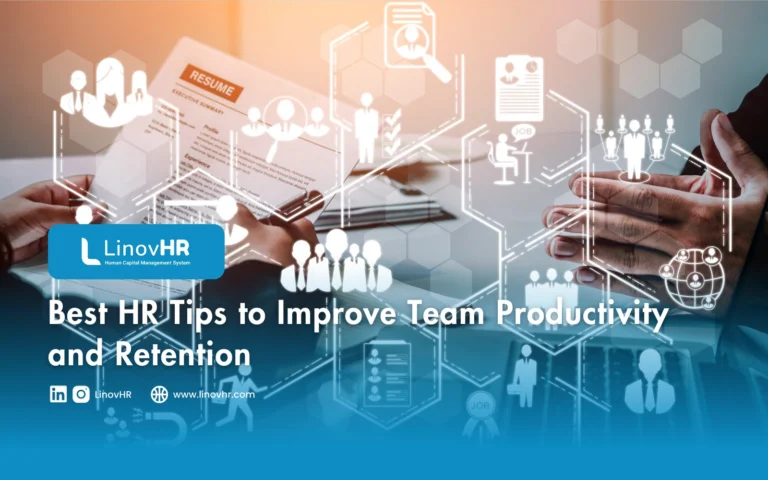Human Resources has evolved far beyond paperwork and basic administration.
In today’s competitive talent landscape, HR plays a critical role in shaping organizational success, improving productivity, cultivating culture, and driving long-term business growth.
But to achieve these goals, companies must adopt effective HR best practices that align with modern workforce expectations and rapid digital transformation.
From data-driven decision-making to stronger employee well-being support, HR practices in 2025 are shifting toward strategies that empower people, not just manage them.
Whether you’re a growing startup or an established enterprise, building a high-performing workforce requires the right approach, the right mindset, and the right tools.
In this article, we’ll explore what HR best practices really mean today, why they matter more than ever, and which strategies your organization should prioritize to stay competitive in 2025 and beyond.
What Are HR Best Practices?
HR best practices refer to proven Human Resource Management strategies that consistently enhance organizational performance, employee engagement, and overall business success.
These practices guide HR leaders in designing people-focused policies that deliver measurable value across the workforce.
There are two main perspectives in HR strategy: best fit and best practices. The best-fit approach emphasizes that every organization has unique needs, so HR policies should be customized to align with its vision, culture, and long-term goals.
Meanwhile, the best-practice philosophy argues that certain HR methods work universally, helping companies improve efficiency and competitiveness regardless of industry or size.
In reality, the most effective HR strategy combines both approaches. HR should adopt universal best practices, while also tailoring them to support the organization’s specific goals and employee needs.
When implemented correctly across areas like performance management, learning and development, and employee relations, HR best practices can drive stronger business outcomes and sustainable growth.
Why HR Best Practices Matter in 2025
In 2025, HR best practices are no longer optional, they are essential for business resilience and long-term success.
With rapid advancements in AI, evolving employee expectations, and an increasingly competitive talent landscape, companies must adopt modern HR strategies to stay ahead and sustain performance.
HR best practices provide the foundation for building a high-performing workforce that adapts quickly, remains engaged, and drives business growth.
1. Drive Better Business Performance
Effective HR practices help align individual goals with organizational priorities. When employees clearly understand how their work contributes to company success, they become more engaged and productive. This alignment leads to stronger performance across teams and ultimately drives better business outcomes.
2. Support Workforce Efficiency and Reduce Costs
Investing in HR best practices improves productivity while reducing turnover. By optimizing hiring, development, and retention efforts, organizations avoid unnecessary expenses associated with recruitment and onboarding. A more efficient and stable workforce means lower operational costs and a healthier bottom line.
3. Build a Competitive Talent Advantage
The war for talent has intensified, and companies that neglect employee experience risk losing top performers. HR best practices help organizations attract skilled candidates, strengthen employer branding, and retain valuable employees through strong onboarding, growth opportunities, and supportive work culture.
4. Strengthen Agility in Times of Change
AI adoption, economic uncertainty, and market disruptions require businesses to move fast. Strategic workforce planning and continuous learning initiatives empower employees to adapt to new roles, technologies, and responsibilities. Organizations with agile HR practices can pivot quickly, remain resilient, and sustain growth even in unpredictable environments.
5. Enable Scalable and Sustainable Growth
As organizations grow, inefficiencies in workforce management can multiply. HR best practices ensure solid processes are in place, from performance management to employee relations, enabling expansion without compromising culture, productivity, or compliance. This stability supports sustainable scaling and future innovation.
Top HR Best Practices Every Modern Company Should Implement
To stay competitive in a fast-changing business environment, organizations must adopt HR strategies that empower people, boost performance, and fuel long-term growth.
Here are the top HR best practices every modern company should implement to build a motivated, high-performing workforce.
1. Ensure Strong Job Security
Employee security builds trust, loyalty, and long-term performance. When employees feel safe in their role, they stay motivated, contribute consistently, and are less likely to leave.
Minimizing turnover not only protects your culture but also saves significant recruitment and training costs. Supporting job stability shows employees, we take care of you, so you give your best to the organization.
2. Hire Selectively to Build a High-Performing Workforce
Bringing the right people onboard is a strategic advantage. Top performers can deliver 2–3x more impact than average employees.
Companies should use structured hiring, skill-based assessments, and fair evaluation criteria to ensure new hires are both capable and committed.
Selective hiring also strengthens workforce diversity, which leads to better innovation and decision-making.
3. Empower Self-Managed and Collaborative Teams
Modern HR focuses on enabling teams that can take ownership, make decisions, and execute effectively. High-performance teams thrive when members feel psychologically safe to share ideas and challenge one another.
HR plays a key role in team formation, goal alignment, and collaboration tools, ensuring every team stays agile, innovative, and connected across the organization.
4. Align Compensation with Performance
Fair and competitive pay is essential to attract and retain top talent. But compensation works best when tied to performance and contribution.
Rewards such as profit-sharing, bonuses, and stock options increase motivation and long-term commitment. By recognizing outstanding talent, companies reduce flight risk and build a strong internal talent pipeline.
5. Invest in Continuous Skills Development
Skill needs are evolving fast, and so must employees. Ongoing learning programs like eLearning, coaching, and upskilling ensure employees stay relevant in a tech-driven world.
Millennials and Gen Z especially value growth opportunities, making development initiatives a critical retention tool. Companies with strong learning cultures adapt faster and maintain competitive advantage.
6. Promote an Egalitarian and Inclusive Workplace
While some roles may be more critical than others, every employee deserves equal respect and opportunity. Adopting a more egalitarian structure, where hierarchies feel flatter and collaboration is encouraged, helps break down barriers and improves idea-sharing.
Practices like uniform policies, shared workspaces, and equal benefits can reinforce fairness and strengthen a sense of belonging throughout the organization.
7. Provide Easy and Open Access to Information
Employees are more efficient and confident when they can easily find the knowledge and resources they need. HR should build strong internal communication systems, such as knowledge hubs, expert directories, and inclusive info channels, to ensure everyone stays informed and empowered.
When information flows freely, employees contribute faster, innovate more, and feel trusted by the company.
8. Practice Transparency in Decisions and Communication
Transparency builds trust. When leaders proactively communicate company priorities, challenges, and decisions, even the difficult ones, employees feel respected and aligned with the organization’s direction.
Open sharing of updates, performance metrics, and policies prevents uncertainty and rumor-based anxiety. A transparent culture strengthens loyalty and supports a high-trust environment.
9. Strengthen Employee Engagement Strategically
Engagement isn’t about perks, it’s about creating work that feels meaningful and supportive. HR should listen closely to what drives motivation within their unique workforce: growth opportunities, recognition, autonomy, wellness, or trust in leadership.
By focusing on the right drivers and measuring their impact, companies can reduce disengagement and boost productivity across all levels.
10. Implement Continuous, Growth-Focused Performance Management
Performance management should be ongoing, not just an annual formality. Setting clear goals, providing regular feedback, and recognizing contributions help employees grow and stay aligned with the company’s strategy.
Tools that capture real-time achievements and enable two-way coaching keep performance conversations relevant and engaging. With the right approach, performance management turns into a powerful engine for learning, motivation, and agility.
Common Challenges in Implementing HR Best Practices
While HR best practices are proven to improve business performance, putting them into action isn’t always easy.
Many organizations still struggle to transition from traditional HR tasks to a more strategic role that drives long-term growth.
Below are the most common obstacles companies face when implementing modern HR approaches.
1. Lack of Leadership Buy-In
When executives view HR as purely administrative rather than strategic, initiatives often lack funding, support, and visibility. Without top-level sponsorship, HR improvements, such as performance systems or cultural initiatives, rarely get the priority needed to succeed.
2. Resistance to Change
Changes to HR policies or systems can feel uncomfortable for employees, managers, and even HR teams themselves.
Employees may worry about increased monitoring or job security, while managers see new HR processes as additional workload. This resistance slows adoption and reduces the effectiveness of new initiatives.
3. Difficulty Measuring ROI
HR efforts like engagement programs or culture-building are often seen as “soft” and hard to quantify. Without clear metrics that link initiatives to business outcomes, such as lower turnover or higher productivity, it can be challenging to prove their value and secure ongoing investment.
4. Limited HR Skills and Resources
Modern HR requires strong capabilities in digital tools, analytics, and change management, skills not all HR teams possess.
Additionally, administrative burdens often leave little time for strategic planning. The lack of proper technology or training can cause new HR systems to fail before they gain momentum.
5. Short-Term Focus Over Long-Term Growth
HR best practices deliver long-term results, but many organizations prioritize immediate financial returns. Programs like leadership development may be undervalued or cut during budget reductions, which slows progress and weakens future workforce readiness.
How HR Teams Can Successfully Adopt Best Practices
Successfully applying HR best practices requires more than knowing what they are, it demands strategic execution, proper resources, and strong leadership alignment.
HR professionals must take a proactive role in shaping the workforce experience and continuously improving people processes.
Here are key steps to help HR teams implement best practices effectively and achieve maximum impact:
1. Secure the Right Budget
HR initiatives such as performance systems, learning programs, and employee wellbeing efforts often require technology and additional resources. HR teams should assess priorities using tools like a prioritization matrix to ensure investments deliver meaningful business value.
2. Gain Executive Support Early
When leadership actively champions HR initiatives, by modeling transparency and prioritizing people, the entire organization takes notice. Leadership buy-in unlocks funding, visibility, and stronger adoption across teams.
3. Upskill the HR Team
To drive strategic change, HR professionals must continually learn new skills such as analytics, communication, and performance coaching. Training and exposure to the latest HR trends and tools equip teams to lead transformation confidently.
4. Use Data to Guide Decisions
Data-driven insights help HR identify workforce challenges, monitor progress, and prove ROI. Tracking metrics like turnover, engagement, and productivity ensures HR strategies are based on facts, not assumptions.
5. Leverage Modern HR Technology
HRIS platforms and employee apps streamline everyday administration and improve access to key information. Automating processes allows HR teams to dedicate more time to strategic work such as talent development and workforce planning.
6. Encourage Continuous Feedback
Effective communication must be intentional. Combining formal channels (surveys, town halls, regular check-ins) with informal conversation creates transparency and helps employees feel heard, strengthening trust and engagement.
7. Standardize Key HR Processes
Consistent, clearly defined procedures, especially in hiring, compensation, and performance, reduce errors and ensure fairness. Standardization builds credibility and supports a positive employee experience.
8. Review and Adapt Policies Regularly
As workplace expectations, laws, and business priorities evolve, HR policies must evolve too. Routine audits ensure processes remain relevant and aligned with current needs.
9. Combine Best Practices for Maximum Impact
HR practices become even more powerful when implemented as a bundle. For example, pairing selective hiring with strong development and fair compensation creates a pipeline of high-performing talent worth retaining. When practices reinforce each other, HR drives stronger and more sustainable business outcomes.
Enable HR Best Practices with LinovHR
To successfully execute modern HR best practices, organizations need more than strategy, they need technology that simplifies, accelerates, and measures impact.
LinovHR, an integrated HRIS, enables HR teams to automate key processes, improve workforce performance, and support stronger decision-making with real-time data.
Automate Core HR Operations
Before HR can be strategic, administrative tasks must be streamlined. LinovHR automates critical operations like employee data management, attendance tracking, and payroll processing (including PPh 21 and BPJS).
This frees HR professionals from manual work so they can focus on culture, learning, and workforce development.
Drive Continuous Performance Improvement
LinovHR’s Performance Management module shifts organizations away from outdated annual reviews.
With real-time goal tracking, continuous feedback, and seamless review workflows, employees stay aligned with business priorities while leaders gain clearer visibility into performance.
Cultivate Skills and Career Growth
To close skill gaps and build future leaders, LinovHR provides Competency Management and a full Learning Management System (LMS).
HR teams can map required skills, assign targeted training, and support transparent career mobility, empowering employees to grow within the organization.
Elevate Employee Experience and Engagement
Through its Employee Self-Service (ESS) portal, LinovHR gives employees direct access to HR services. Whether requesting leave, accessing payslips, or updating personal data via mobile, employees experience faster processes, greater transparency, and improved satisfaction.
Transform your HR strategy today. Explore how LinovHR can streamline processes and boost workforce performance.
Schedule a demo with our team now!


